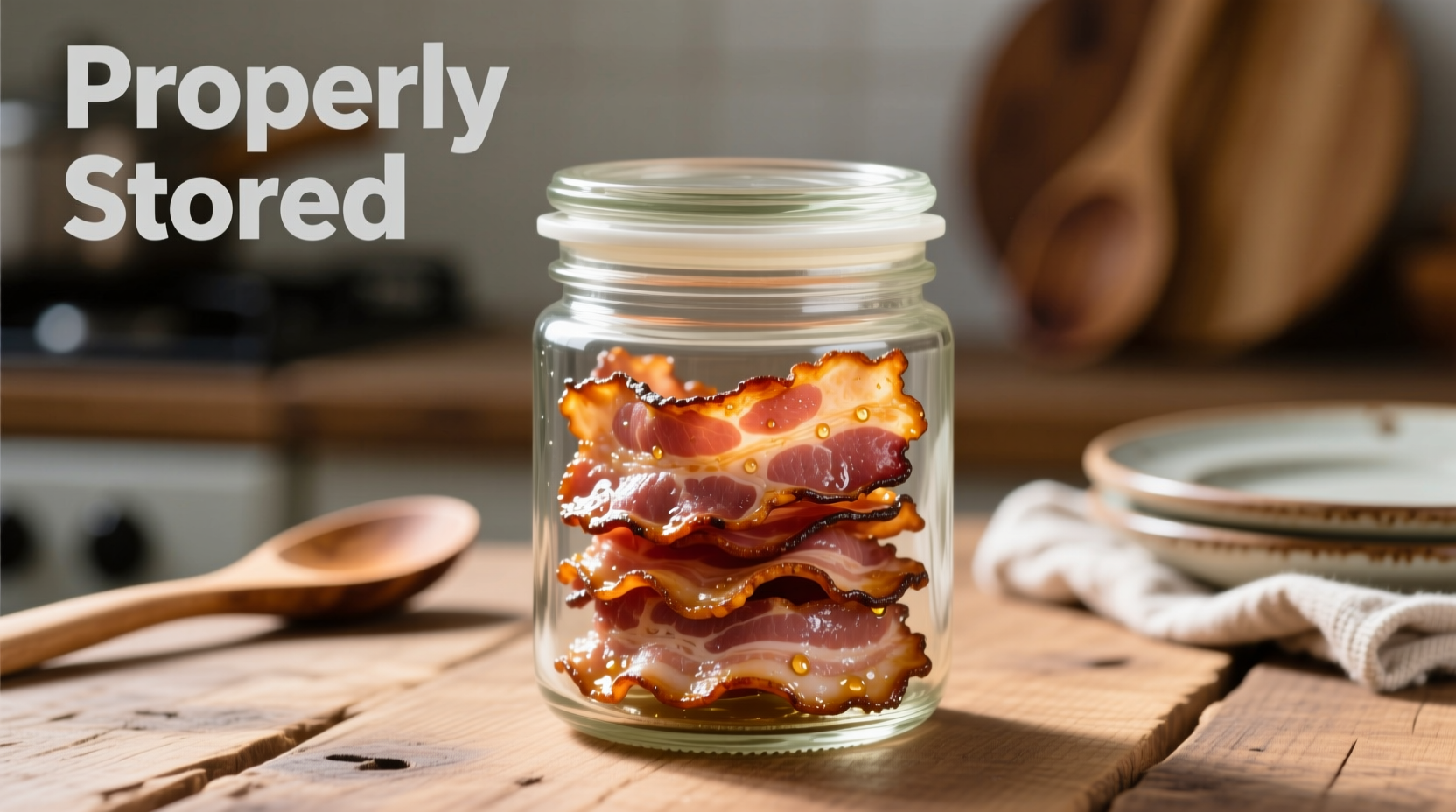The Science Behind Cooked Bacon Shelf Life
Understanding why time matters for cooked bacon requires knowing how bacteria grow. Once bacon is cooked, its high fat content and protein composition create an ideal environment for bacterial growth if not stored properly. The USDA Food Safety and Inspection Service confirms that cooked meats like bacon enter the temperature danger zone (40°F-140°F) where bacteria multiply rapidly.
Unlike raw bacon which contains curing agents that extend shelf life, cooked bacon has lost these protective elements during the cooking process. This fundamental change explains why the safe consumption window dramatically shortens after cooking.
Refrigeration: Maximizing Freshness for 4-5 Days
Proper refrigeration technique makes the difference between bacon that tastes fresh and bacon that becomes unsafe. Follow these evidence-based steps:
- Cool rapidly - Transfer cooked bacon to a shallow container within 2 hours of cooking to facilitate quick cooling
- Air-tight storage - Use glass containers with tight seals or vacuum-sealed bags to prevent moisture loss and odor absorption
- Temperature verification - Ensure your refrigerator maintains 40°F (4°C) or below using an independent thermometer
- Layering technique - Place parchment paper between bacon slices to prevent sticking while maintaining crispness
Research from Kansas State University's Food Safety Department shows that bacon stored using these methods retains both safety and quality for the full 4-5 day window. Temperature fluctuations above 40°F significantly reduce this timeframe.
| Storage Method | Temperature | Maximum Safe Duration | Quality Considerations |
|---|---|---|---|
| Refrigerator | 40°F (4°C) or below | 4-5 days | Maintains crispness for 2-3 days, then gradually softens |
| Freezer | 0°F (-18°C) or below | 1 month | Best quality within 30 days; safe indefinitely but quality degrades |
| Room Temperature | Above 40°F (4°C) | 2 hours maximum | Rapid bacterial growth begins immediately |
Freezing: Extending Shelf Life to 1 Month
When you need to store cooked bacon beyond the refrigeration window, freezing provides a safe solution. Follow this professional technique:
- Cool bacon completely at room temperature (no more than 30 minutes)
- Arrange slices in single layers on a parchment-lined baking sheet
- Flash freeze for 1-2 hours until solid
- Transfer to vacuum-sealed bags or heavy-duty freezer bags, removing all air
- Label with date using freezer-safe marker
The flash-freezing step prevents slices from sticking together, allowing you to remove only what you need later. According to the FDA Food Code, properly frozen cooked bacon remains safe indefinitely, though quality peaks within 30 days.

Recognizing Spoilage: When to Discard Cooked Bacon
Even within recommended timeframes, spoilage can occur if storage conditions aren't optimal. Watch for these definitive signs:
- Visual changes - Grayish-green discoloration, visible mold, or slimy film
- Odor indicators - Sour, fishy, or unpleasant rancid smell (fresh bacon should have a pleasant smoky aroma)
- Texture alterations - Excessive stickiness or sliminess when touched
- Taste test (not recommended) - If it tastes off, spit it out immediately
The USDA emphasizes: "When in doubt, throw it out." Consuming spoiled bacon risks foodborne illnesses like Staphylococcus aureus or Listeria, particularly dangerous for vulnerable populations.
Safe Reheating Practices for Stored Bacon
Proper reheating restores crispness while ensuring safety:
- Refrigerated bacon - Heat to 165°F (74°C) internal temperature using oven (350°F for 5-8 minutes) or air fryer (375°F for 3-4 minutes)
- Thawed frozen bacon - Reheat directly from frozen for best texture; add 1-2 minutes to cooking time
- Never reheat multiple times - Each reheating cycle increases bacterial growth risk
Food safety experts recommend consuming reheated bacon within 2 hours. Leftovers from reheated bacon shouldn't be stored again.
Special Considerations for Vulnerable Populations
Certain groups face higher risks from foodborne pathogens. If preparing bacon for these individuals, follow stricter guidelines:
- Pregnant women - Consume within 3 days of cooking, not the full 5-day window
- Immunocompromised individuals - Freeze immediately if not consuming within 24 hours
- Young children and elderly - Always reheat to 175°F (79°C) for added safety margin
These adjustments account for reduced immune response in vulnerable populations, providing an extra safety buffer beyond standard recommendations.
Practical Meal Prep Applications
Cooked bacon's shelf life makes it ideal for meal preparation. Maximize efficiency with these professional techniques:
- Batch cook 1-2 pounds at a time for weekly use
- Store in single-serving portions for grab-and-go breakfasts
- Use within 3 days for salads and sandwiches where texture matters most
- Reserve frozen portions for cooked applications like soups and casseroles
Professional chefs often cook bacon to just below desired crispness, knowing it will continue cooking slightly during storage and reheating. This technique preserves optimal texture throughout the storage period.











 浙公网安备
33010002000092号
浙公网安备
33010002000092号 浙B2-20120091-4
浙B2-20120091-4